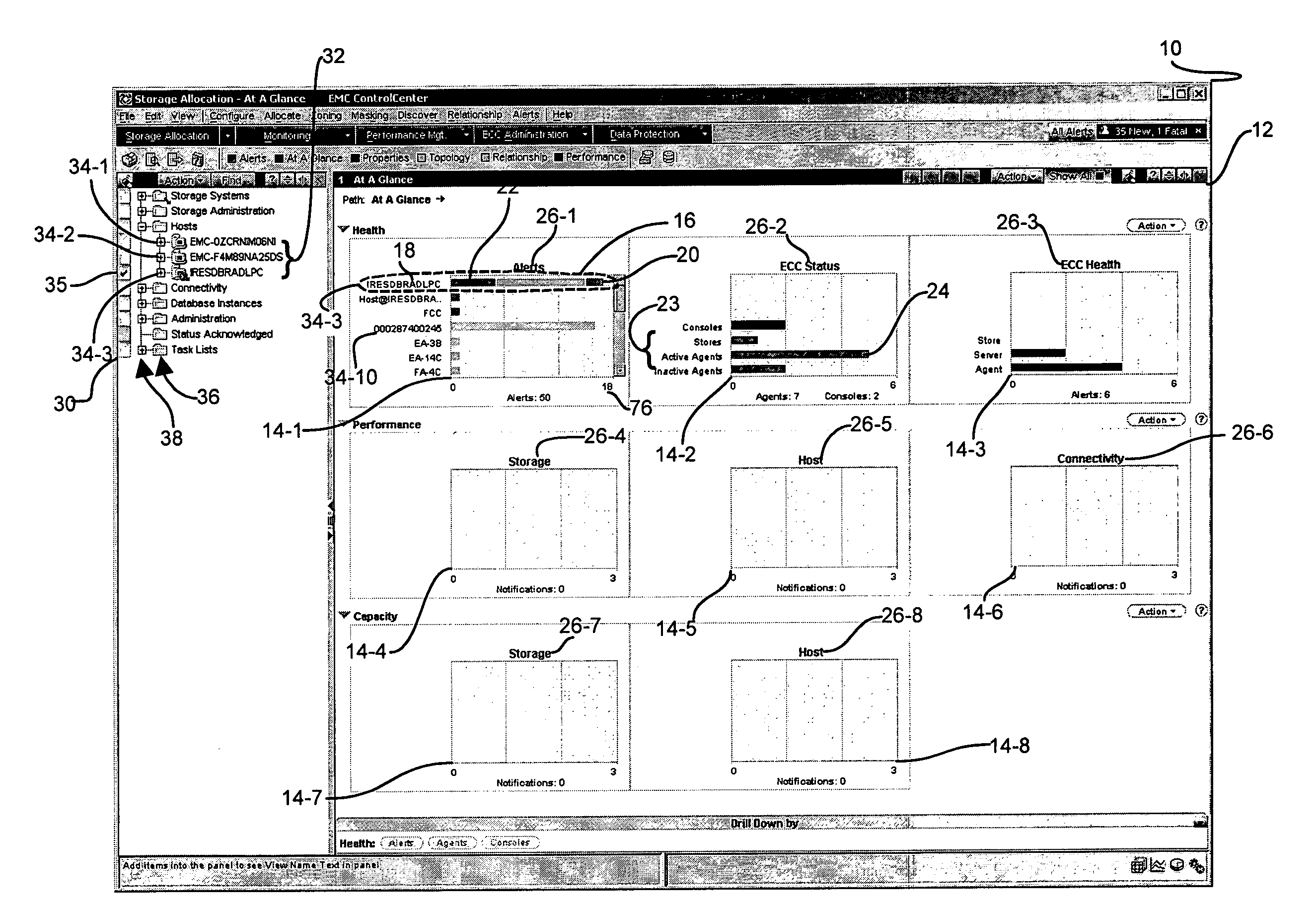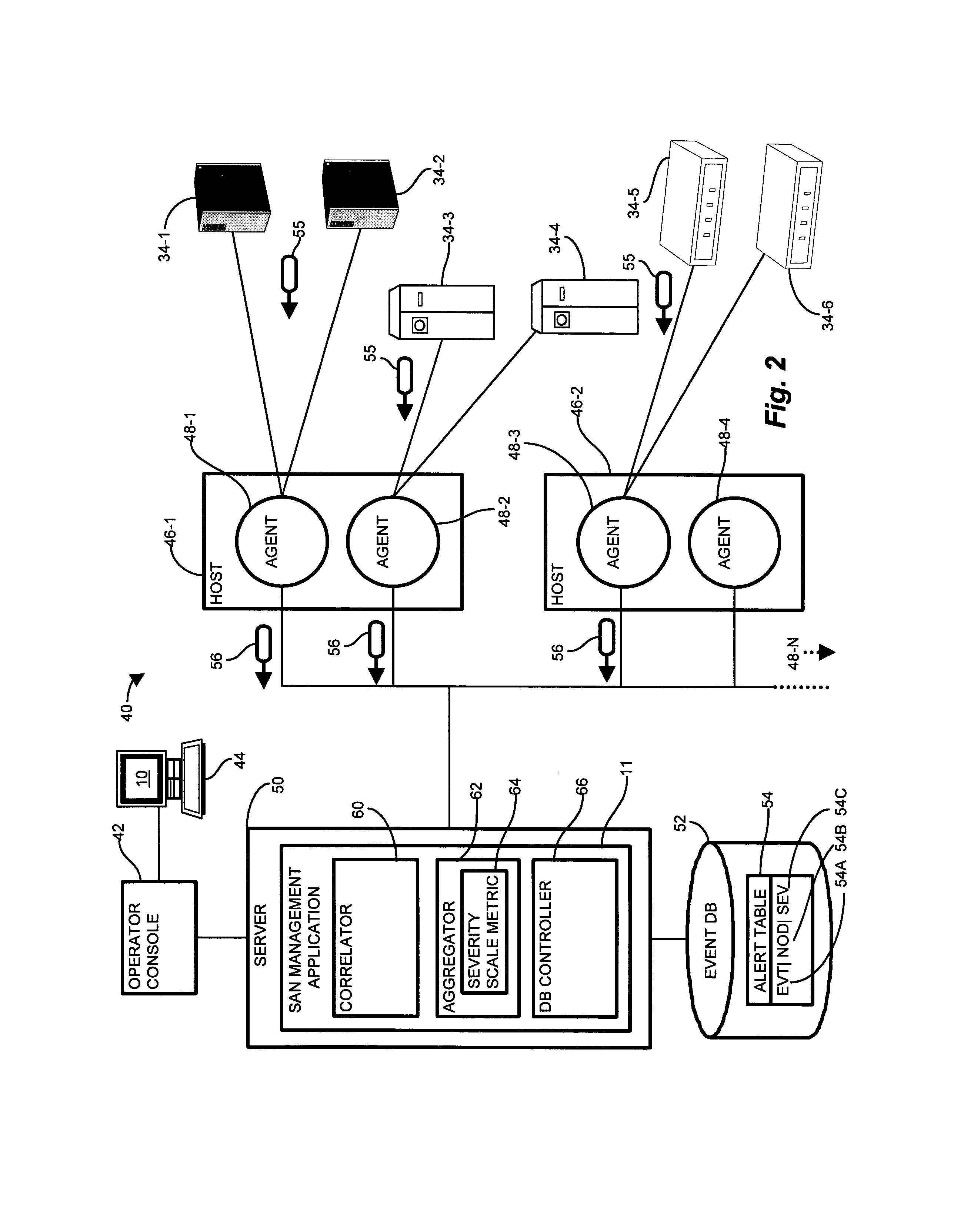System and methods for processing and displaying aggregate status events for remote nodes
a status event and remote node technology, applied in the field of conventional managed information system, can solve the problems of unwieldy message volume, requiring operator intervention, and formidable task of managing storage area network infrastructur
- Summary
- Abstract
- Description
- Claims
- Application Information
AI Technical Summary
Benefits of technology
Problems solved by technology
Method used
Image
Examples
Embodiment Construction
[0030]Particular embodiments of the invention provide a method for various agents disseminated in a multi-node system, such as a storage area network, to determine and report status events as alert messages back to a central server. The central server receives, aggregates, and processes the status events after storing them in an event repository, such as a status event table or other suitable data structure. The central server processes the events by organizing them into buckets according to event category, and determining a severity level for each event.
[0031]The central server then orders the events by event category for each node, in which the server computes a severity scale aggregating the status events corresponding to each node for that event category. The severity scale employs a severity scale metric which ranks nodes in order of overall severity, with the nodes having the most critical overall status ranked first. The central server then displays, via a console driven GUI,...
PUM
 Login to View More
Login to View More Abstract
Description
Claims
Application Information
 Login to View More
Login to View More - R&D
- Intellectual Property
- Life Sciences
- Materials
- Tech Scout
- Unparalleled Data Quality
- Higher Quality Content
- 60% Fewer Hallucinations
Browse by: Latest US Patents, China's latest patents, Technical Efficacy Thesaurus, Application Domain, Technology Topic, Popular Technical Reports.
© 2025 PatSnap. All rights reserved.Legal|Privacy policy|Modern Slavery Act Transparency Statement|Sitemap|About US| Contact US: help@patsnap.com



